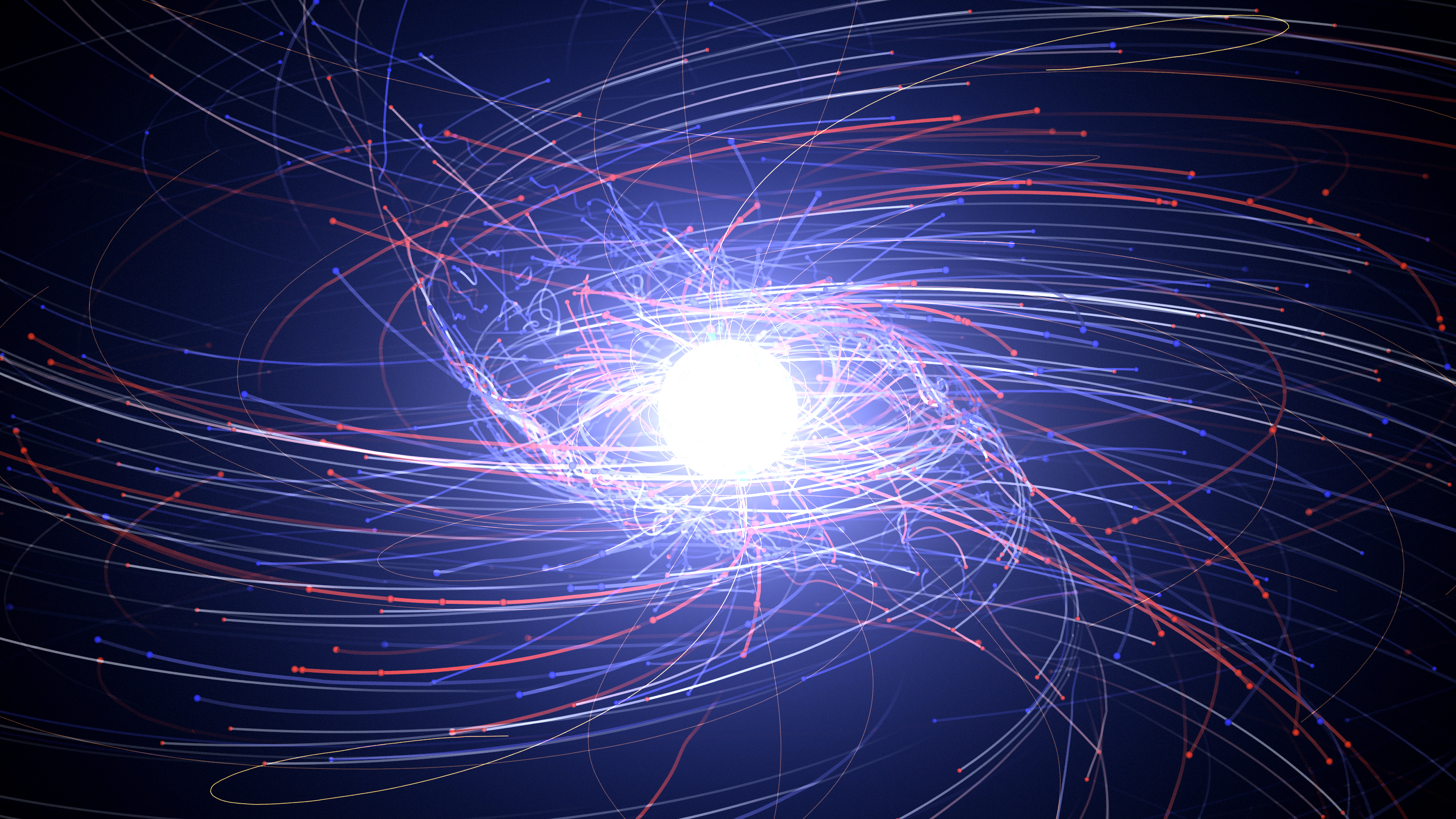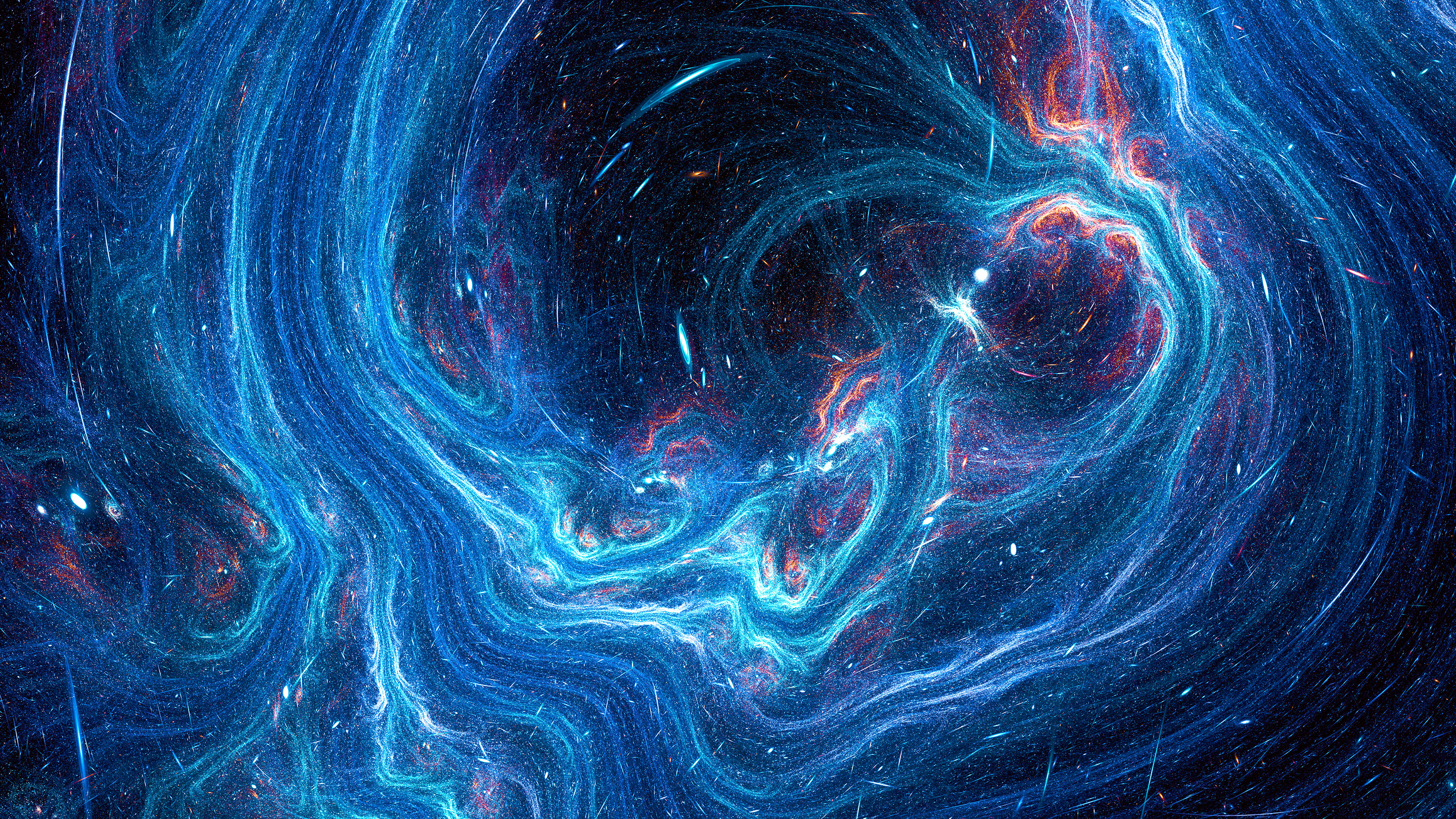ABC of Physics
Antimatter

Source
The mountains, trees, humans, and other material objects around us are made up of atoms of oxygen, carbon, hydrogen, and so on. These atoms contain negatively charged electrons and positively charged protons. But in the high energy environment of the universe, positively charged positrons (anti-electrons) like electrons and negatively charged anti-protons like protons are also formed. A material consisting of particles such as positrons and antiprotones is called an antimatter. For example, in anti-hydrogen, a positively charged proton is replaced by a negatively charged antiproton and a negative electron is replaced by a positively charged positron.
Big Bang
The scientific model, consisting of mathematical, observational and experimental evidence, states that the universe evolved from a very hot, dense and small state about 13.8 billion years ago, reaching its present state.
Conductor
The objects from which current and heat can be transferred from one place to another are called electric conductors and thermal conductors, respectively. Electric wires and cooking utensils, for example, are made of conducting materials.
Dark Energy
The universe is expanding, that is, the distance between distant galaxies is increasing with time. Not only that, the speed of expansion of the universe is also increasing with time. The reason for this accelerated expansion of the universe is dark energy.
Einstein
Scientist presenting Special Theory of Relativity and General Theory of Relativity. There are other services of Einstein, but only these two theories are specifically mentioned because these theories help to explain the evolution of the universe, from the smallest particles in the universe to the Big Bang.
Force
The amount by which the state of rest or motion of objects is changed. For example, to move a table from one place to another, we have to push or pull it, that is, we have to apply force.
Galaxy
A system that has a lot of stars, a lot of black holes, a lot of good interstellar gas, and a lot of dark matter. Some 27% of the universe consists of dark matter which shows its presence due to its gravitational effects.
Hydrogen
The most common element in the universe. Its atoms are both the lightest and the simplest of the atoms of the rest of the elements.
Isotopes
Different atoms of the same element that differ from each other in the number of neutrons. For example, hydrogen has three isotopes: protam, deuterium and tritium. Proteum has no neutrons, deuterium has one neutron and tritium has two neutrons.
Joseph John Thomson
The scientist who discovered the electron. The current that drives all devices from bulbs to computers and mobiles is nothing but the flow of electrons.
Kinetic Energy
The energy that is caused by motion is called kinetic energy. For example, a batsman hits a ball with a bat and gives it kinetic energy. And because of this kinetic energy, the ball goes into the hands of the fielder standing on the boundary and the batsman is out.
LASER
Light amplification by stimulated emission of radiation. Yes, laser is the short name for such a long term.
Marie Curie
The legend.
He is still the only person to have won the Nobel Prize in two different fields of science. One in physics and one in chemistry. Five members of the Currie family have won a total of four Nobel Prizes. This is also a record.
Nuclear Fission and Nuclear Fusion
If a large nucleus breaks down to form a small nucleus, this process is called nuclear fusion, and the formation of a large nucleus by combining small nuclei is called nuclear fusion. Except for the hydrogen in our bodies, all the other elements in the stars are made up of nuclear fusion.
Optics
The branch of physics that studies the properties of light.
Pair Production
A process in which energy produces matter. For example, the formation of a positron and an electron from a gamma ray photon.
Quarks
Fundamental particles that make up protons and neutrons. Protons are made up of two up quarks and one down quark, while neutrons have one up and two down quarks.
Radioactivity
The automatic emission of alpha, beta and gamma rays from non-formed nuclei is called radioactivity. This work is done both naturally and artificially.
String Theory
According to this theory, electrons, quarks and other particles consist of one-dimensional objects, strings. Just as a particular sound is produced by vibrating a string of a guitar in different ways, so all the particles and their properties are the result of oscillations in different dimensions of strings of string theory.
Thermodynamics
This branch of physics studies the changes that take place from one form of energy to another. For example, a car engine burns fuel and gets heat from the chemical energy in it and then converts that heat into work to drive the car. There are different types of chemical energy, heat and work energy.
Uranium
A radioactive element.
** Vibrational Motion**
If an object repeats its motion around a central position, that motion is called vibrational motion. Vibrating the strings of a musical instrument produces music. When the vocal cords in the throat vibrate, our voice is produced.
Watt
Unit of power A 12-watt light bulb in the house uses 12 joules of energy per second and produces light.
X-Rays
The waves generated by the oscillation of electromagnetic fields are called electromagnetic waves. There are electromagnetic waves such as light, ultraviolet rays, gamma rays and X-rays. X-rays are widely used in the medical field to look at internal organs.
Young's Modulus
Young's modules tell us how hard the material is. The higher the Young's modulus of a material, the harder it will be to change its shape or break it.

Can you please stop spamming Leofinance with non finance related topics?
Posted Using LeoFinance Beta
Ok @erikah